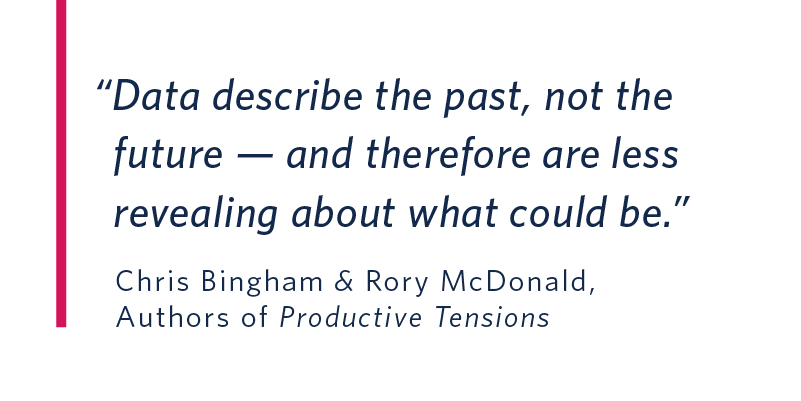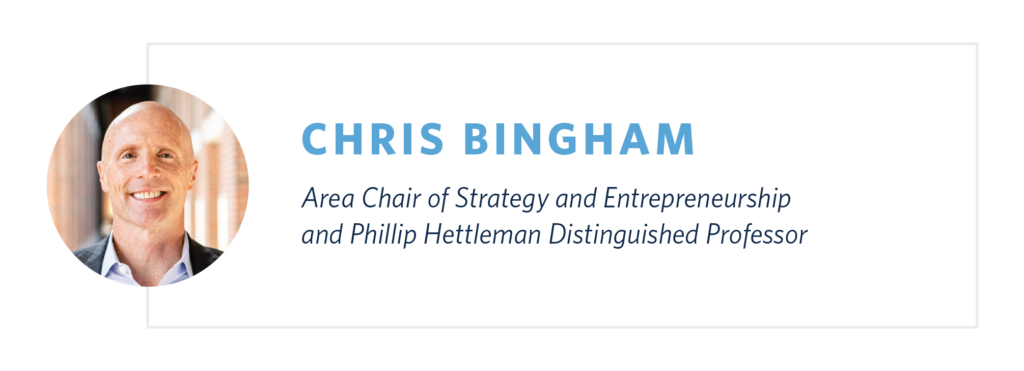Thought Leadership
When Pursuing Innovation, Ignore the Data and “Trust Your Gut”

Netflix has a significant advantage in the competitive world of media production: data. The company relies on extensive analysis of customer data when making strategic moves, such as its decision to produce the acclaimed political thriller House of Cards.
Despite the success of House of Cards, however, data can be misleading. In fact, data nearly scuttled Netflix’s most successful show to date: Stranger Things. “Netflix’s data showed very clearly that programs featuring kids didn’t fare well,” authors Chris Bingham and Rory McDonald explain in their book Productive Tensions: How Every Leader Can Tackle Innovation’s Toughest Trade-Offs. “Neither did ’80s nostalgia, or shows featuring Winona Ryder.”
Because we live in an era when massive quantities of data are never more than a click or swipe away, making innovative business decisions should, in theory, be easier than ever before. However, as Chris and Rory explain in their book, it is sometimes wiser to ignore the data and instead “trust your gut.” Netflix officials learned this lesson well when they followed their intuition, and not the data, when choosing to produce Stranger Things.

Data: Powerful, but Imperfect
Chris and Rory remind us that data have a critical limitation: they “describe the past, not the future – and therefore are less revealing about what could be.” The result is that data can be a powerful ally when making some, but not all, business decisions. If your goal is to make incremental improvements in your organization, such as adjusting operations or pricing, then leaning on figures is often the right choice.
On the other hand, if you are striving to create a totally new market offering, use caution when deferring to data. This is because data are a snapshot of the past. They can describe what customers wanted at the precise moment in time when the numbers were generated, but they cannot describe what customers will want in the future. Therefore, you risk stifling innovation by deferring wholly to data in your decision-making process because this type of information, by its very nature, faces backward in time rather than forward.
How to Protect Innovation with a “Data Barrier”
If your organization is striving to maximize innovation, the authors recommend not only trusting your gut, but going further. They advise creating a data barrier, or a layer of protection “between the innovation process and the data used in everyday business operations.” Your organization’s data barrier might consist of any or all of these initiatives:
1) Ignore data from your best customers
It can be dangerous to rely too heavily on feedback from your best customers. Organizations that do so might miss opportunities to create innovative offerings that their customer base has not yet conceived of or thought to ask for.
2) Create an innovative culture
Chris and Rory caution against an organizational culture in which management backs every decision with quantitative data. Instead, they suggest that leaders foster a culture that values additional methods such as logic, intuition, and qualitative insight.
3) Appoint a data skeptic
Assign an employee to play “devil’s advocate” in the face of the numbers. The authors describe this person’s role as holding “data at arm’s length if [they] feel strongly that an important contrarian idea needs to be nurtured and protected.”
4) Embrace a holistic approach
Crafting groundbreaking market offerings is both an art and a science. Aspiring innovators should embrace multiple perspectives when making decisions rather than relying on sets of figures as a tiebreaker.
Looking Forward, not Backward
Data are valuable decision-making tools. But if your goal is to craft never-before-seen market offerings, consider protecting innovation from data’s potentially stifling effects. Tools like a data barrier can help your organization maintain a healthy skepticism toward the numbers, and in turn empower your teams to make more innovative and forward-thinking decisions.
